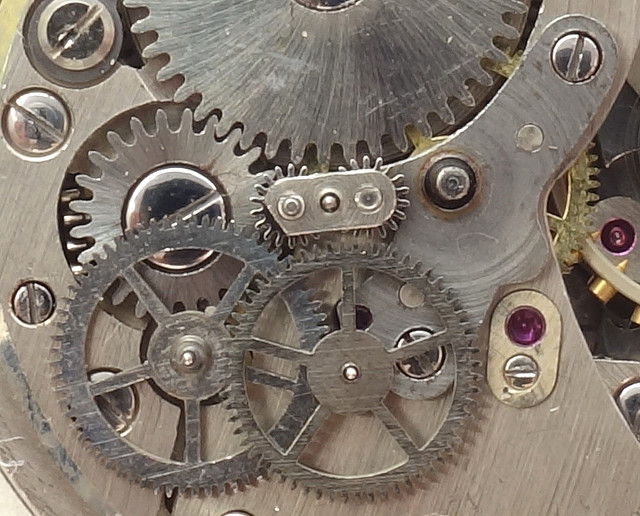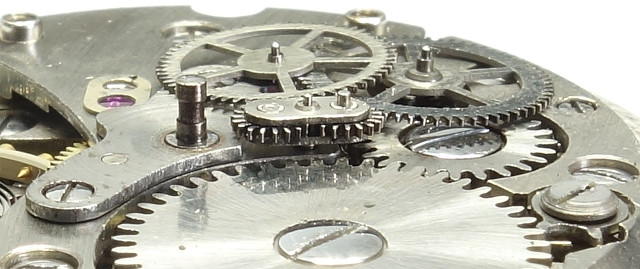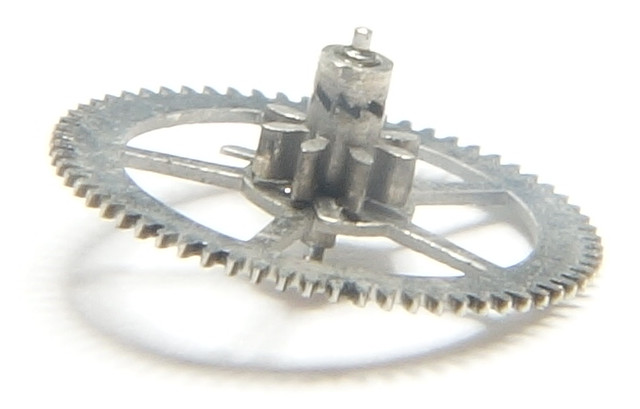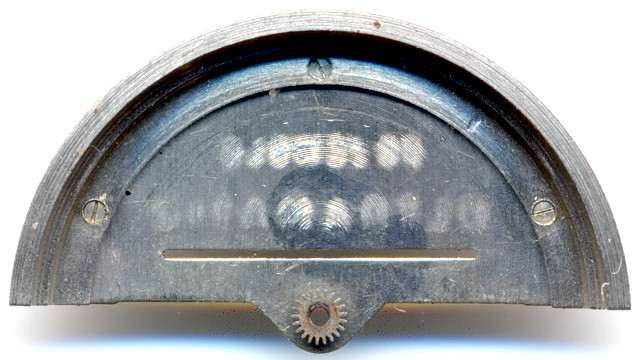Description
In the early 1960ies, Hermann Becker (HB) released their “Ultramatic” selfwinding movement. With a diameter of 11 1/2 lignes, it was up to date; the flattened dial side allowed its integration into the contemporarily fashionable ultra flat watches.
It’s easy to see, that all important bearings contain rubies, even the minute wheel bearing. Together with the selfwinding mechanism, this movement can advertize its the high number of 30 jewels.
Although ETA movements were technically ahead that time, the center minute wheel was still up to date on almost all movements in the early 1960ies, including those movement of HB.
The gear train consists of a center minute wheel, followed by the third wheel, center seconds wheel and finally the escape wheel.
The monometallic screw balance is secured against shocks in two Rufa Antishock bearings and beats slowly with 18000 A/h. It regulates a conventional pallet lever movement of swiss type.
Without selfwinding mechanism, the HB 112 is more or less nothing but a HB 111, but contains already the required preparations for the selfwinding mechanism like ruby bearings, holes and bearing bushes.
The selfwinding mechanism is constructed as a rocking bar changer. Depending on which direction the oscillating weight rotates, it connects either with the first or with the second reduction wheel, so that at the end, the winding happens always in the same direction.
The two large changing wheels and the rocking bar changer are ruby beared, but not the two wheels of the rocking bar changer.
The oscillating weight is axle beared. The axle can easly be changed by releasing its two mounting screws.
To decouple the selfwinding gear train when the movement is wound manually, the last reduction wheel, which integrates with the crown wheel, has got a vertically working Breguet clutch.
The axle-beared oscillating weight consists of two parts, bolted with three screws.
When the oscillating weight is missing, you can spot the clutch at 6 o’clock, which takes care, that the two reduction wheels never turn back.
The lavish usage of cap jewels is nice to see. They don’t have to a real function, in the best case, they keep dirt and water away from the oil reservoirs of the bearing rubies. Nevertheless, they increase the number of jewels to be written onto the dial.
In the lab
Technical data
| Manufacturer: | HB |
| Caliber: | 112 |
| Size: | 11 1/2''' (measured: 25,6mm) |
| A/h: | 18000 |
| Number of jewels: | 30 |
| Escapement: | Pallet lever |
| Balance types: | Nickel screw balance |
| Shock protection(s): | Ruby-Shock |
| Balance bearing / direction hairspring: | Clockwise |
| Moveable stud: | no |
| Adjust mechanism: | Hairspring key |
| Construction: |
|
| Construction type: | solid construction |
| Winding mechanism: | yoke winding system |
| Setting lever spring: | 2 hole(s) |
| Features: |
|
| References: | Flume: 1962 74 |
| Mentioning in literature (years): | 1960 |
| Inventory number: | 19011 |












